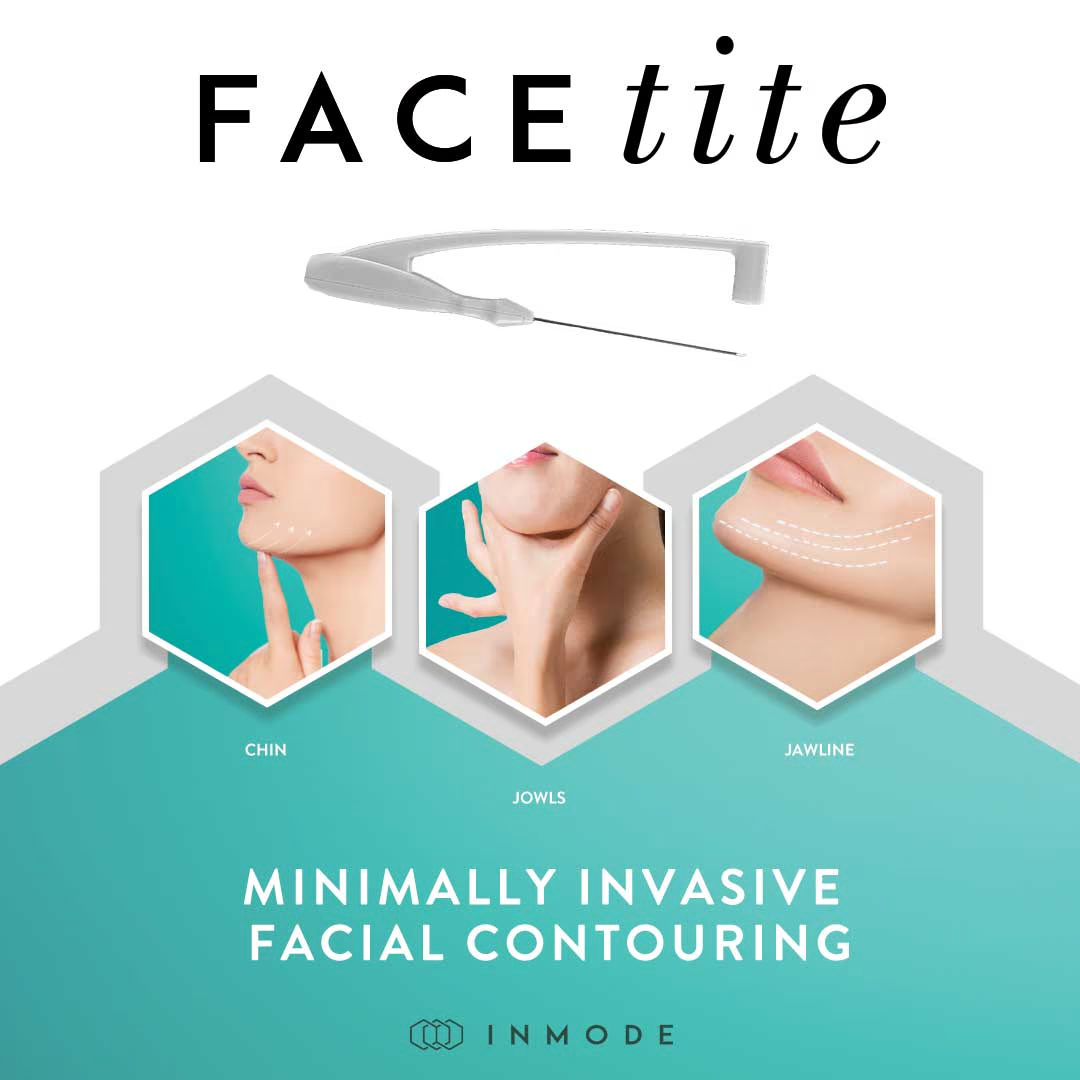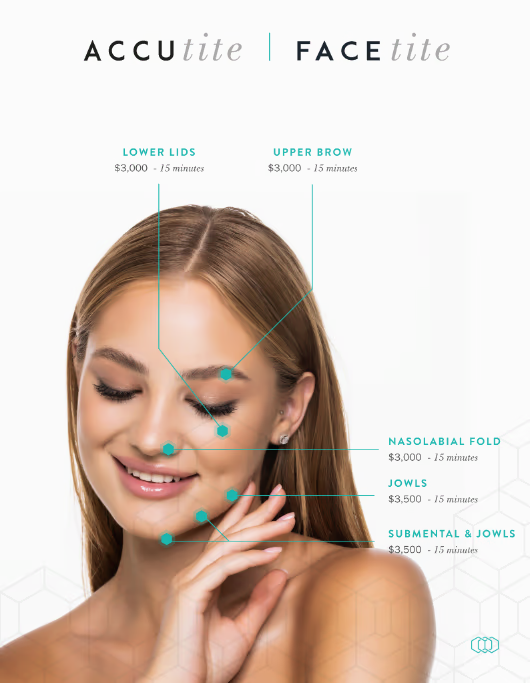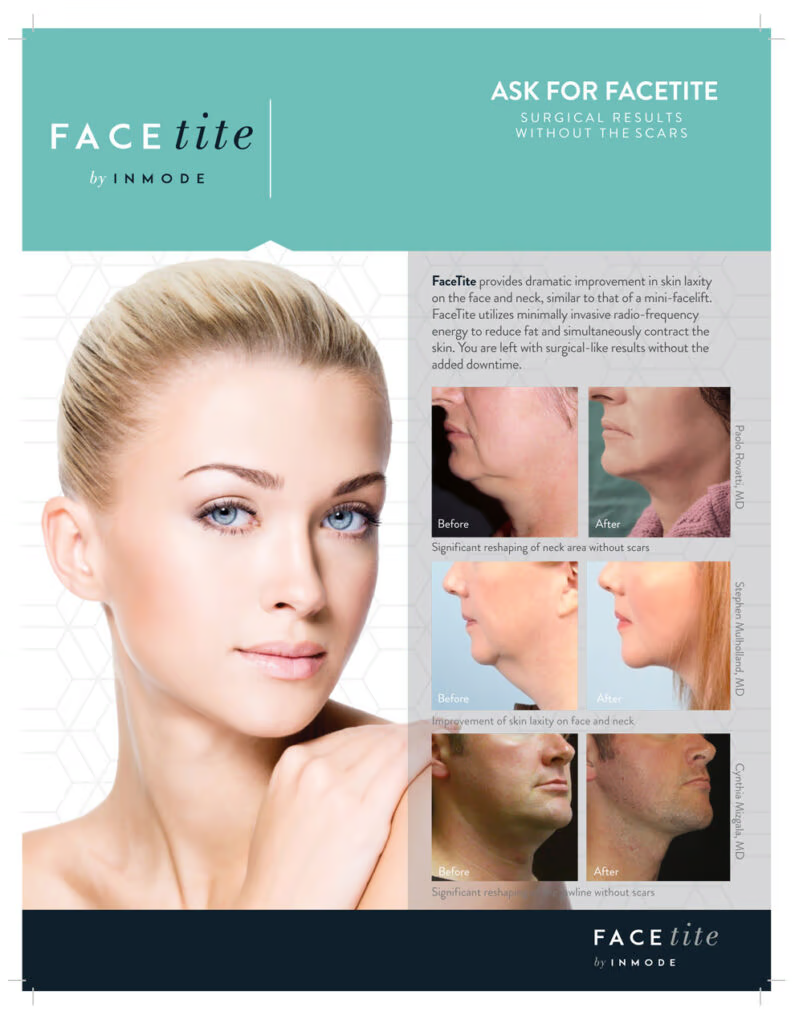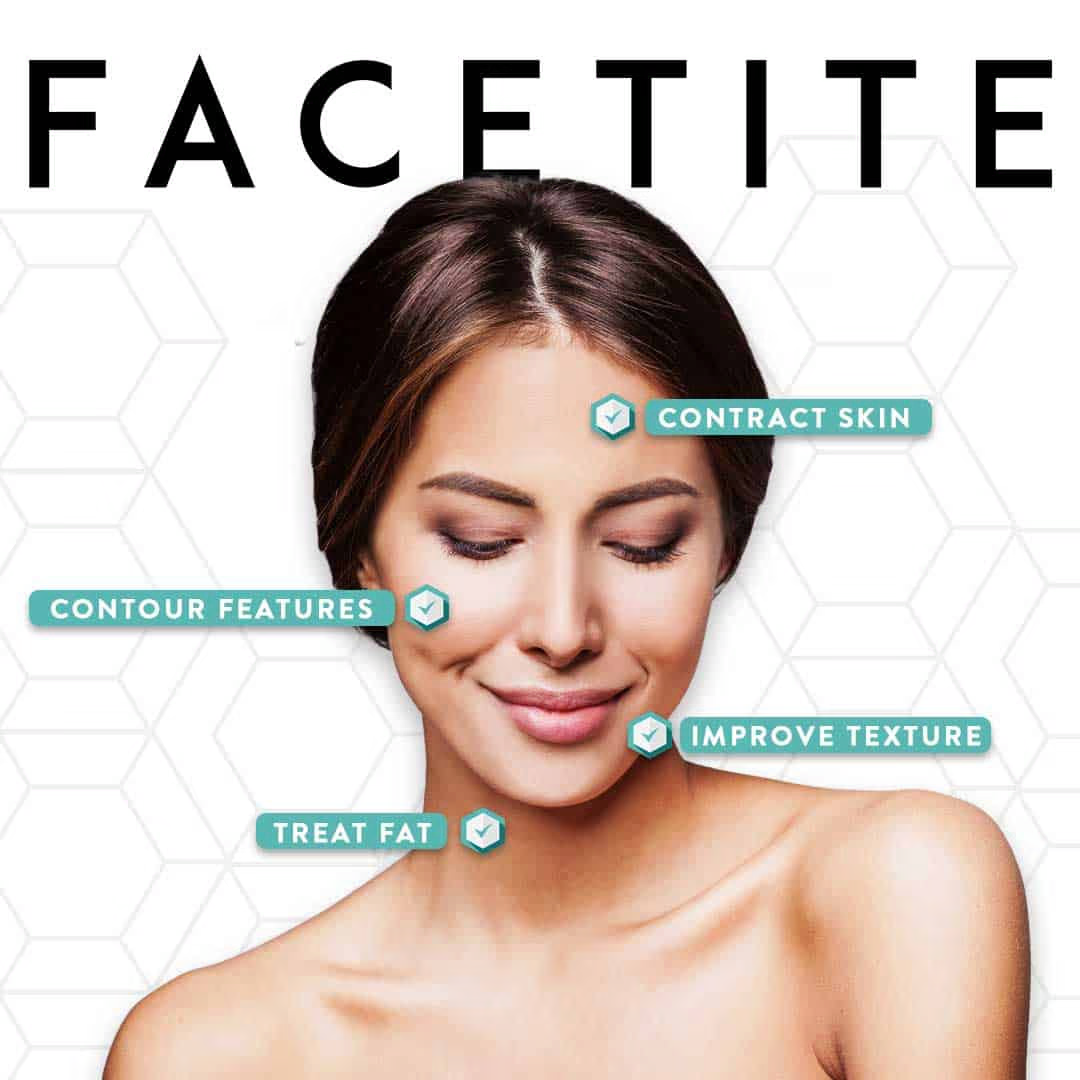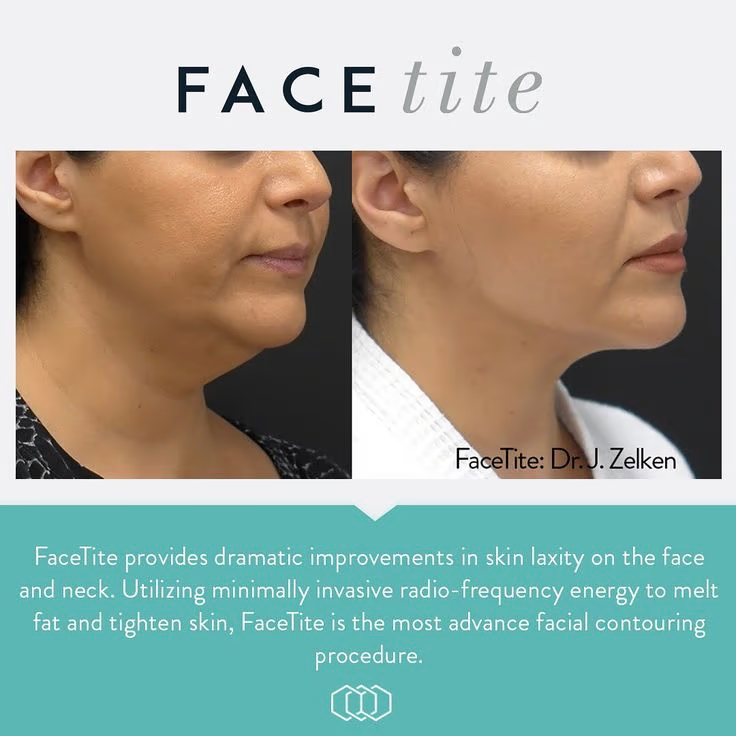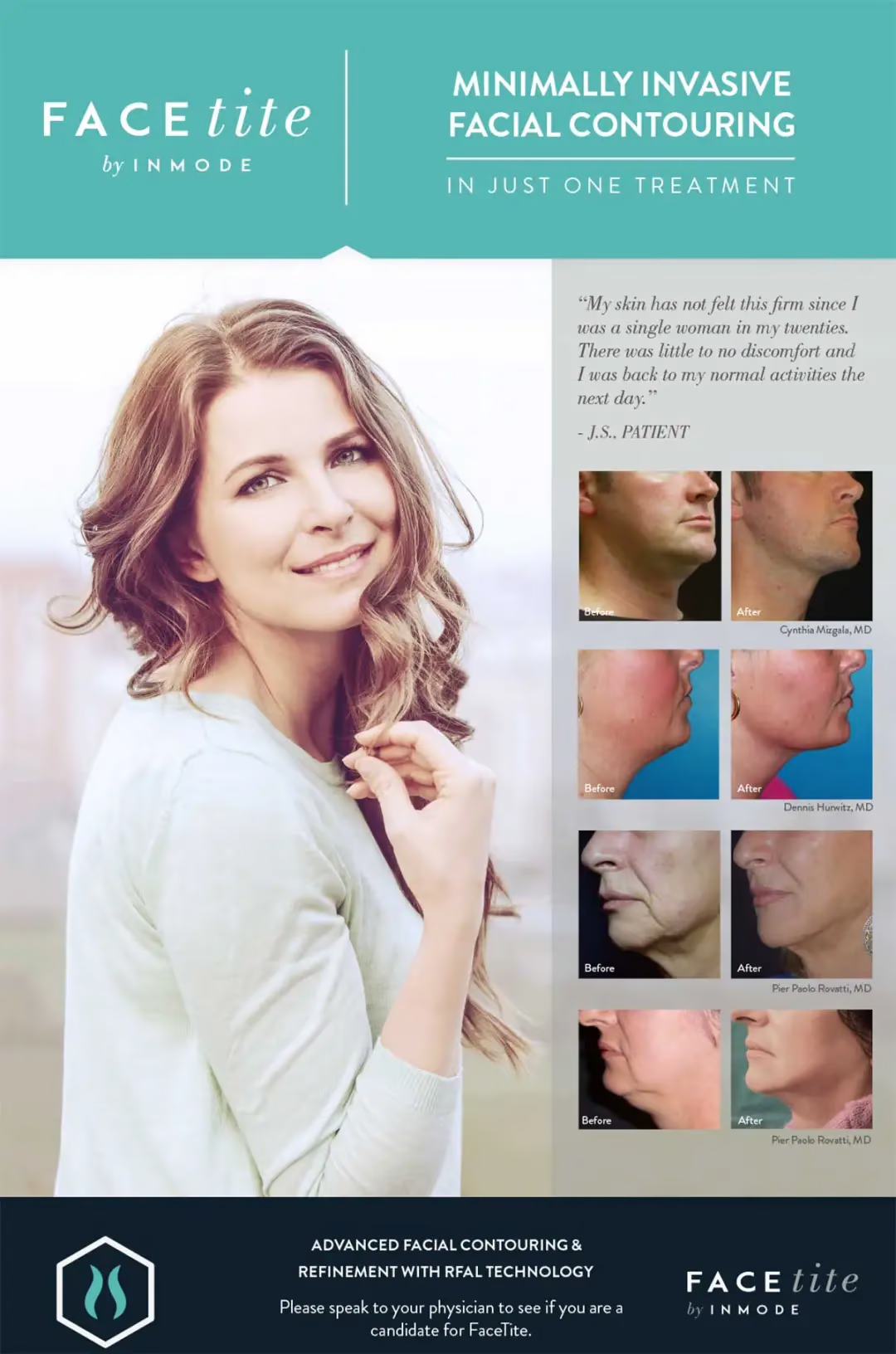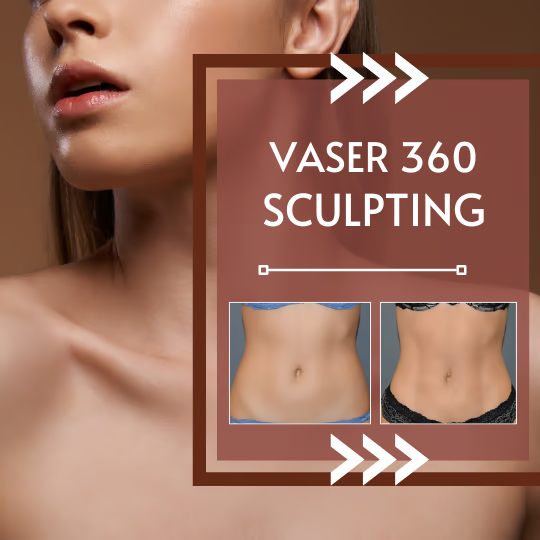FaceTite IgniteRF Consult
FaceTite is a minimally invasive cosmetic procedure that uses radiofrequency (RF) energy to tighten skin and reduce fat on the face and neck. It can treat sagging skin, wrinkles, and other issues in areas such as the jowls, cheeks, neck, eye area, and brows.
Note: All procedures require an in-person consultation and candidacy verification prior to treatment. All of our products & services are only available for pickup at our Honolulu location. We do not ship products or offer off-site services. If you are off-island we will credit it to your account for next time you are in town.
Deposits: Lock-in special pricing for 6 months (one treatment, one time). All deposits are nonrefundable but will be credited towards your account towards any service.
Online Booking Tool
Please Input "Consultation" as both the Category and Treatment Options, then Choose Dr.John Ferguson as the Provider
Learn All About
FaceTite IgniteRF Consult
What is FaceTite ?
An advanced contouring system to treat a patient’s face and their small areas. FaceTite is minimally invasive and is the next best alternative to facelifts without the invasive surgery. You can work safely in the sub-dermal plane as you contract and contour tissue using RF technology. Help firm a patient’s skin and make them feel years younger without any discomfort with FaceTite.
Key Benefits
- Directional thermal field provides fat coagulation and tissue remodeling.
- Dual temperature technologies provide greater safety and control compared to other technologies.
- 100% energy concentration in the treatment zone.
How it works:
- A small probe is inserted under the skin through a small incision
- A wand moves across the skin to distribute RF energy
- The RF energy melts fat cells and stimulates collagen production
- A separate tube suctions out the liquified fat
FaceTite can provide facelift-like results without surgery. It’s considered safe, but side effects can include bruising, swelling, discomfort, infection, and scarring. Major side effects are rare, but can include bleeding, nerve damage, fever, and chills.
FaceTite results usually last about 5–6 years, but some patients get much more than that. It’s not a substitute for a surgical facelift or intended to resolve severe skin laxity.
What are the pros and cons of FaceTite?
- FaceTite comes with less downtime than a surgical facelift.
- This minimally invasive outpatient procedure is often done in a doctor’s office, under local anesthesia only. “Sometimes a sedative, such as Valium, is added for a more comfortable experience,”
- Pain is minimal, both during and after treatment.
- It penetrates more deeply than some other RF and ultrasound energy treatments, so the results can be more significant and last up to five years.
- You should see some firming within the first week (sometimes even immediately), as existing collagen fibers contract.
- While it does require tiny incisions, it leaves no significantly visible scars for most patients.
- It’s less expensive and much less invasive than a surgical facelift. Several FaceTite reviewers who rated the procedure “Worth It” on RealSelf said that the minimal downtime and discomfort were major reasons they chose this procedure, instead of traditional facial plastic surgery.
Cons
- It’s possible to have swelling and bruising for a week or longer after the procedure.
- Patients with more advanced aging changes, such as significantly loose skin and poor skin elasticity, usually aren’t good candidates. For these patients, facial plastic surgery options like a facelift or neck lift (which removes excess skin, lifts the underlying muscle layer, and smoothes the skin that remains) are usually a better option.
- Since FaceTite liquifies fat cells, those who are worried about hollowing or aging along the face due to fat loss might not be a good candidate for this treatment.
- As with any treatment that involves heat, there’s a risk of skin burns or discoloration.
- Rarely, nerve injury can cause facial muscle weakness for 6 months or more.
- Like other skin tightening treatments, this one won’t tackle all signs of aging, like hyperpigmentation or textural issues. If those are your primary concerns, a laser treatment or chemical peel can treat hyperpigmentation, while a microneedling treatment, such as Morpheus8, can improve skin texture.

